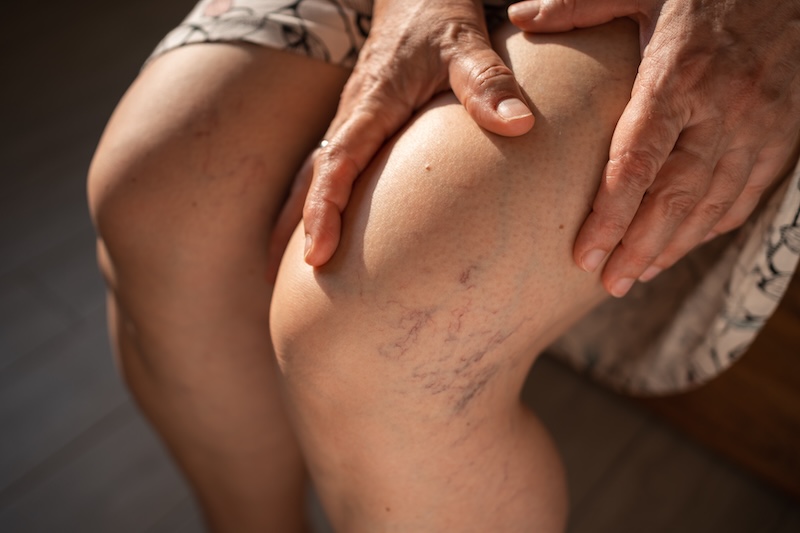Think of blood circulation as the delivery driver to wounds. It brings oxygen, nutrients and immune cells directly to the damaged tissue. Poor circulation equals poor delivery, and without those three components the wound can become chronic, leading to delayed healing and increased risk of infection.
How to Improve Blood Circulation
- Movement. Moving the body helps ensure that blood reaches peripheral areas where wounds are often located, such as the feet and legs. For those who have difficulty with mobility, improving blood circulation is possible through various techniques, such as;
- Leg Elevation. Elevating the legs above the level of the heart can help improve blood flow, particularly in the lower extremities. This technique helps reduce swelling and promotes venous return, making it easier for blood to circulate. It’s recommended to do this several times a day to enhance circulation (Center for Vascular Medicine).
- Change of Position. Frequent repositioning can help prevent pressure sores and improve circulation in non-mobile patients. Caregivers should assist in changing the patient’s position every 1-2 hours, ensuring that different parts of the body are relieved from constant pressure.
- Compression Garments. Wearing compression socks or sleeves can stimulate blood flow in the legs and arms by applying gentle pressure. Compression therapy is commonly used to prevent blood clots, reduce swelling, and improve venous circulation, especially in patients who have limited mobility (Mayo Clinic).
- Diet.You’ve heard the saying “you are what you eat,” and a balanced diet is a key factor in preventing plaque buildup that can obstruct blood flow.
Foods that are beneficial for circulation include berries, leafy greens, and fatty fish. Maintaining or improving circulation through a proper diet can increase your body’s ability to deliver blood to the wound, enhancing healing. Check out our article on the “Power of Protein in Wound Healing.” (Cleveland Clinic) (The Good Body).
- Quit Smoking. Smoking can slow down the wound healing process. Peripheral artery disease (PAD) is a condition that severely limits blood flow to the arms or legs, this can lead to non-healing ulcers. Quitting smoking not only improves circulation but it reduces the risk of developing PAD. (Methodist Wellness) (CDC). Here are some online resources that can help support you during the smoking cessation program.
By combining these approaches, you can significantly improve your circulation and support your body’s natural healing processes.
Supporting Resources:
- Cleveland Clinic. “How to Improve Blood Circulation” Available from: https://health.clevelandclinic.org/how-to-improve-blood-circulation-naturally
- Medical News Today. “How to Improve Circulation.” Available from: https://www.medicalnewstoday.com/articles/320793#improving-circulation
- The Good Body. “How to Improve Blood Circulation.” Available from: https://www.thegoodbody.com/how-to-improve-blood-circulation/
- Methodist Wellness. “Caring for Wounds That Don’t Heal.” Available from: https://yourhealth.methodisthealth.org/blog/caring-for-wounds-that-don-t-heal
- Center For Disease Control. “About Peripheral Arterial Disease.” Available from: https://www.cdc.gov/heart-disease/about/peripheral-arterial-disease.html#:~:text=Peripheral%20arterial%20disease%20(PAD)%20is,mimic%20the%20symptoms%20of%20PAD.
- Mayo Clinic. “Mayo Clinic Q and A: Tips for using compression stockings.” Available from: https://newsnetwork.mayoclinic.org/discussion/mayo-clinic-q-and-a-tips-for-using-compression-stockings/
- Center for Vascular Medicine. “Top Tips to Elevate Legs and Mistakes to Avoid.” Available from: https://www.cvmus.com/blog/top-tips-elevate-legs-and-mistakes-avoid
